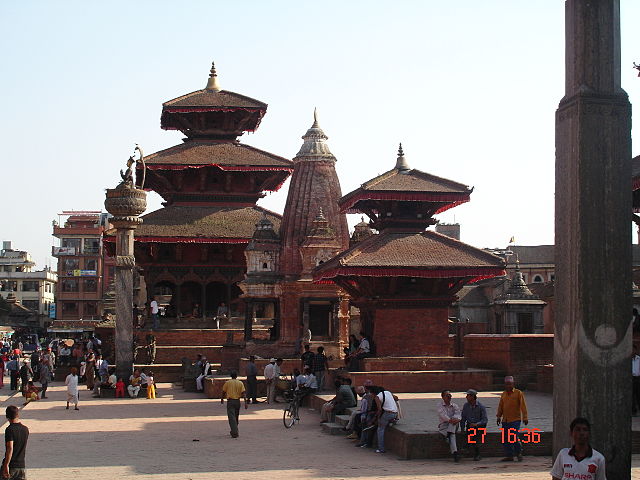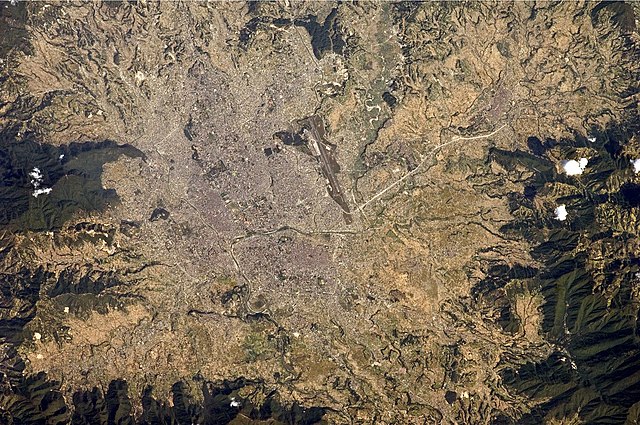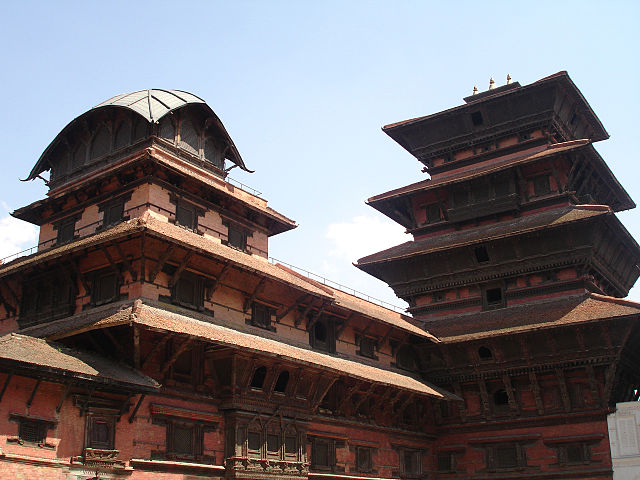The Malla dynasty also known as the Malla confederacy, was the ruling dynasty of the Kathmandu Valley in Nepal from 1201 to 1779. This dynasty was founded by Arideva Malla. Though the latter Mallas were regarded as belonging to the Raghuvamsha dynasty, they were also seen as continuations and descendants of the Licchavi dynasty. Later Malla kings also traced one section of their lineage from Nanyadeva, the founder of the Karnat dynasty of Mithila. The term malla means wrestler in Sanskrit. The first use of the word malla in the Kathmandu Valley began in 1201.
Portrait of Jayasthiti Malla (r. 1382–1395)
Portrait of King Bhupatindra Malla (r. 1696–1722)
Bhaskar Malla of Kathmandu (r. 1700–1714) dressed in Mughal fashion
Near the palace of the Malla dynasty rulers in Lalitpur with pillar and statue of king Yoga Narendra Malla (Lalitpur).
The Kathmandu Valley, also known as the Nepal Valley or Nepa Valley, National Capital Area, is a bowl-shaped valley located in the Himalayan mountains of Nepal. It lies at the crossroads of ancient civilizations of the Indian subcontinent and the broader Asian continent, and has at least 130 important monuments, including several pilgrimage sites for Hindus and Buddhists. There are seven World Heritage Sites within the valley.
Kathmandu valley seen from the space by the NASA Earth Observatory
The Durbar Square in Kathmandu
Pashupatinath Temple, dedicated to Pashupati.
Swayamhbu Stupa








